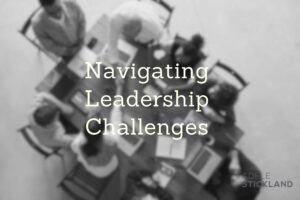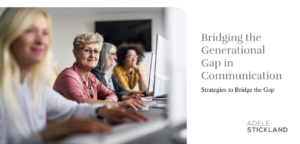Developing an effective Wellbeing Strategy is a top priority for forward-thinking organisations. Not only has the pandemic created unprecedented long term stress issues but also retaining and engaging key staff is essential for recovery. Key performers in an organisation are looking to work with organisations that share a common purpose, vision and mission. Today’s employees are looking for their job to offer more than simply a salary for a day’s work. Employee engagement is key to attracting and retaining the best staff and a comprehensive and effective Wellbeing Strategy will help to deliver this. This blog will outline how to create a Wellbeing Strategy. The aim is to outline simple first steps in a preliminary strategy for those organisations developing their Wellbeing Strategy. As well as catering for organisations that are looking for a deeper more comprehensive system. A structure that will develop a longer-term effective Resilient Wellbeing Strategy using a professional Resilience and Wellbeing trainer. This blog will outline the simple steps organisations need to take to develop a comprehensive strategy. This article will allow organisations to self identify the stage their organisation is at. Then are in a position to recognise the resources required to get them to the next stage.
Why does your organisation need a Wellbeing Strategy?
Research illustrates that there is a positive correlation between wellbeing and an organisations performance. Employee wellbeing has a critical impact on numerous areas of business performance. In addition, employee engagement is an essential requirement for organisational growth. Ensuring that the organisation’s Wellbeing Strategy is in line with the requirements of staff will mean a stronger future for the organisation; high levels of performance, productivity and profitability.
For example, organisations with little or no wellbeing programmes have statistically higher levels of employee sickness absence. A recent survey from CIPD showed that mental ill-health and stress were the top two causes of long term absence in UK workplaces and the main reason why employees left their jobs.
Employee turnover is having a considerable impact on organisations profitability bottom line, with mental ill-health being identified as the number one reason employees go on long term sick.
Creating an effective Wellbeing Strategy will create a work-life harmony, where employees will feel engaged. Whilst some companies are at the initial stage of establishing MHFAS and EWPs (bought in employee wellbeing portals) others are further along. Organisations that have the MHFAs in place are looking now to create a ‘wellbeing culture.’ A culture that embodies and promotes a resilient workforce with a significant reduction in sick days and higher employee engagement and job satisfaction.
How can HR develop a robust wellbeing strategy?
Short term reactionary strategy vs efficacy long term strategy
Companies that create an ad-hoc reactive strategy to wellbeing are simply creating a short term ‘tick box’ exercise. Whilst most organisations have the EAPs, MHFAS and even an onsite wellbeing coach, the reality is that most HR departments and leaders are unaware of how much these facilities are actually being used.
Are they a waste of resources and budget?
Companies that offer short term interventions such as mental health or stress management training without having a real understanding of the needs of their workforce, is a reactive policy-driven strategy. Taking this reactive measure is like sticking a plaster on a recurring wound without trying to establish why the wound happened in the first place.
Whereas a systematic, long term approach will create longer-term financial benefits and loyalty from employees. Organisations that have a well-defined workplace health Wellbeing Strategy see a far higher ROI than organisations that just offer ad-hoc training packages.
Other organisations within the UK have the mandatory EAPs, on/off-site counsellors, wellbeing campaigns and MHFAs in position and are now looking to strengthen their wellbeing strategy. A wellbeing strategy that is focused on raising awareness and having open conversations and is led by senior managers and therefore creates and establishes a durable Wellbeing culture.
How to create an effective Organisational Wellbeing Strategy
In the same way that other business strategies are created and implemented a wellbeing strategy can follow the same directional flow.
Most organisations and HR departments I have worked with over the pandemic have a wellbeing strategy that has been created using a useful business format like this:
- Baseline the organisations’ current position – to gain knowledge & understanding of what the organisation currently offers and the prevailing cultural trend. This is achieved by looking at operations through a wellbeing lens via a staff engagement survey or a focus group.
- As a Resilience Trainer, I have hosted a number of internal focus groups, asked the right questions and been able to ask impartial questions
- Wellbeing coordinators are then able to feel the temperature and discover how teams feel/act and speak about the organisation
- Having an overview of the situation will include investigating what initiatives are in place already – what works what doesn’t and why.
- Creating a plan based on the feedback from sources – internal focus groups, sickness and other data, employee questionnaires
- Discuss the Wellbeing Strategy internally before rolling out company-wide
- Create milestones indicators of success,
- Analyse key performance indicators you would like to improve in the organisation for instance – the number of sick days or disciplinary actions that take up managers’ time.
- Draw up timescales and budgets
- Implement wellbeing monthly/quarterly agendas
- Consider more ambitious long term plans that can be developed in the future when there are available time and budget.
A clear example of a simple structure for a wellbeing strategy would look like this:
AUDIT –
Check in with employees discover their needs:
engagement survey & internal audit/focus groups
Review HR data
⬇️
Management Buy-in – culture course correction
Set annual budgets
⬇️
Develop performance and tracking data KPIs
using employee engagement surveys
⬇️
Develop a strategic overview and plan
– based on a monthly wellbeing focus
⬇️
Develop a 2-way communications strategy – employees & leaders
⬇️
Develop wellbeing initiatives –
Raise awareness and starting the conversation
using internal literature or well being trainers on adhoc basis
⬇️
The feedback loop on initiatives – from employees survey and KPI data
⬇️
REVIEW
Creating an overview based on what is currently available, what the company is currently actioning as well as a deeper understanding of how the company is perceived. Stepping back like this before creating a monthly wellbeing focus will ensure that the training is more effective in terms of cost, time and efficacy.
If you are considering creating a more in-depth wellbeing strategy that goes that stage further click here to read: How to Build Resilience in the Workplace: The Ultimate Guide
An outline comprehensive Wellness Strategy for longer-term effectiveness
Once the first overview has been developed, the company check and audit. The wellbeing coordinator is then in a good position to see where the gaps are within the organisation and develop a strategy around those gaps.
For instance, if senior leaders in the company feel that they are providing enough resources on the EAP and therefore the mental health agenda has been served but the audit shows that only 2% of the organisation are using the facilities. There is a gap. An expectation gap.
Another example I have encountered working with organisations is the strong belief that company Y has a robust wellbeing ethic and feels that their employees are well provided for, and yet one or two line managers are overworked, stressed and are creating pockets of tension in their team. Generating strain and a bottleneck of pressure in that department, which in turn affects the entire organisation.
Without an adequate ‘where are we now’ audit stage, these knowledge, expectation and engagement gaps go unnoticed and widen as more information is supplied without any real knowledge of what is required.
Acknowledging that a reactive wellbeing approach is at best irrelevant and worst-case scenario alienating employees who find the wellbeing activities pointless and inconsequential.
Once level 1 Audit has been carried out, further levels of Organisational resilience can be developed so that resources are effectively focused, relevant and appropriate use of time and budget.
Working with a number of companies I have developed The 6 core resilience platforms™ which is a continuum. Each level supporting the next level in the six levels of organisational resilience. I have outlined a brief summary below:
Level 1: Company culture Check
- Check the culture and climate of the organisation
- The initial ‘check’ platform begins with an organisational audit.
Level 2: Create awareness around Choice for managers
- Managers have a choice on how to react, awareness training is developed based on the knowledge gaps discovered in level 1.
- These trainings are based on education and awareness of mental resilience techniques
- Mental agility is the awareness that there are effective strategies that will grow and empower teams.
Level 3: Managers develop a Conscious Commitment to incorporate resiliency techniques
- Managers have an objective response, not an emotional one
- Deeping the knowledge from level 2 awareness training, level 3 is longer training based on developing and using mental agility
- Level 3 is about changing behaviour rather than simply awareness of behaviour using mental agility techniques.
- Leader education and growth around a conscious commitment to changing the culture so that employees are empowered to make a difference.

For a more detailed analysis of the 6 Core Levels of Organisational Resilience ™️ A framework for Organisational Resilience: 6C’s of workplace resilience read more here: How to Build Resilience in the Workplace: The Ultimate Guide
Level 4: Combine and Integrate wellbeing response company-wide
- All employees combine and integrate work/life balance
- Based on the concept: HEALTH AND WELLBEING
- An integrated wellbeing strategy & tools to create wellbeing integration on an individual level using Health techniques such as – nutrition, sleep, exercise and hobbies
Prefer Video? Watch Resilience Training in the Workplace
Level 5: Consistency
- Managers have embedded the wellbeing tools – now creating consistency around wellbeing
- Based on the concept: STAMINA
- Tenacity using developed skills of persistence, bounce back and realistic optimism
Level 6: Consolidate and Community
- Managers move towards extrinsic rewards from the community
- Based on the concept: COLLABORATION
- Developing deep and sustainable social competencies built through supportive networks
Next steps
The best way forward is to book a call with me, Adele Stickland and together we can discover what stage your organisation is currently at, and how you can best implement the most proactive strategy that will serve your employees.
If you or your organisation would like assistance in creating or developing an existing wellbeing programme to frame conversations and support managers and employees then:
- Book a call, Adele Stickland
- Email me directly Adele Stickland adelestickland1@gmail.com
- Contact me via LinkedIn
- DOWNLOAD: White Paper: How much is mental ill-health in the workplace costing?
Download my latest White Paper: How much is stress in the Workplace costing The paper discusses the impact of Covid-19 along with the mental health issues that organisations can foresee which will take a huge amount of managerial time, leading to lost productivity and stress, as well as increased absenteeism.

Book a call with me, Adele Stickland and together we can discover what stage your organisation is currently at, and how you can best implement the most proactive strategy that will serve your employees.




